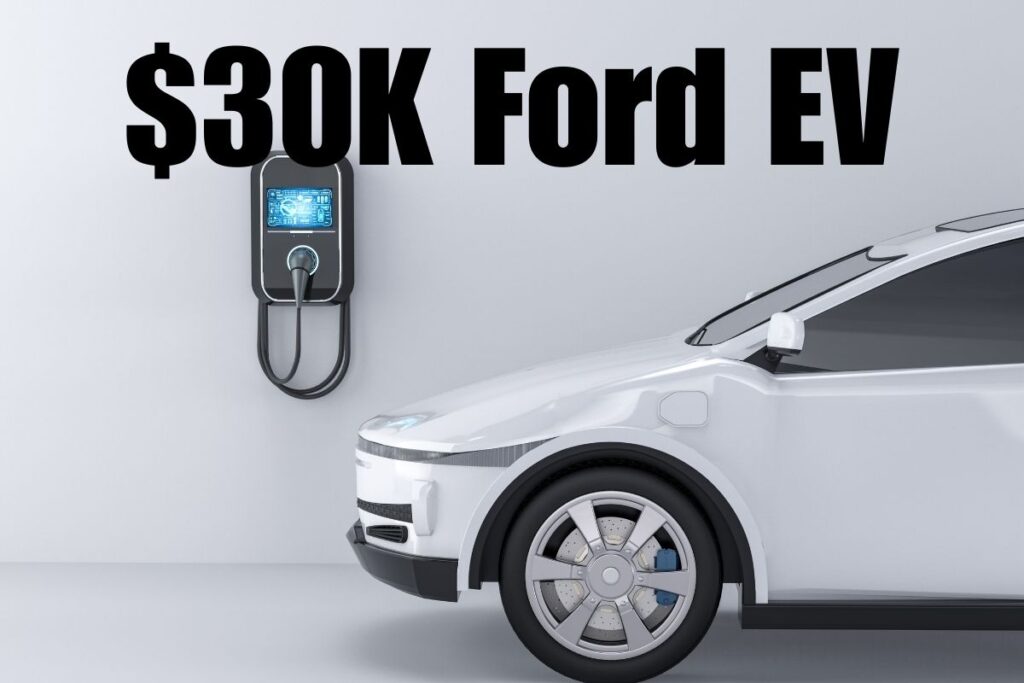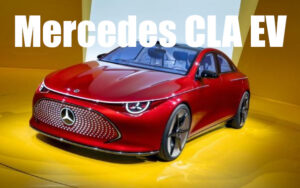
Ford has set an ambitious target to produce a cost-effective $30,000 electric vehicle (EV) by 2027, aiming to ramp up its EV production despite a turbulent journey marked by financial losses and strategic shifts.
Short Summary:
- Ford aims to produce a $30,000 EV by 2027.
- Current challenges include significant financial losses and delays in production targets.
- Ford plans to focus more on hybrids while gradually scaling its EV infrastructure.
In an effort to keep pace with the evolving electric vehicle (EV) landscape, Ford Motor Company has announced its intention to develop an affordable $30,000 electric vehicle by 2027. This ambitious target is part of Ford’s broader strategy to increase EV adoption and become a key player in the electric mobility sector, despite facing significant financial and operational hurdles.
During Ford’s second-quarter earnings call, the company revealed that its Model e division is projected to incur a $4.5 billion loss for the year, a noticeable increase from the previously anticipated $3 billion loss. In the second quarter alone, Ford reported a $1.8 billion loss, translating to an approximate loss of over $32,000 on every EV sold. This follows the trend of price wars within the industry, notably with Tesla, which has placed additional pressure on Ford’s EV pricing strategy.
As a result of these financial losses, Ford has adjusted its production goals. The company had initially set a target to produce 600,000 EVs annually by the end of 2023. However, this target has now been postponed to 2024, and the long-term goal of manufacturing 2 million EVs per year by 2026 no longer holds a firm deadline.
Jim Farley, Ford’s CEO, expressed a pragmatic view of the situation, stating, “The near-term pace of EV adoption will be a little slower than expected, which is going to benefit early movers like Ford.” His comments highlight the strategic shift from rapid scaling to a more measured approach in EV production.
One of the major challenges Ford faces is achieving profitability in its EV sector. Industry analysts suggest that Ford needs to produce approximately 100,000 units per quarter to break even. In the second quarter of 2023, Ford sold a combined total of only 34,000 EVs and hybrids. Therefore, it’s clear that reaching profitability will take time.
In the meantime, Ford is doubling down on hybrid technology and capitalizing on the strong performance of its Pro commercial division. The company has announced plans to upgrade its North American assembly sites, including the Oakville Assembly Complex in Ontario, to ramp up production of hybrid and electrified vehicles. This hybrid-focused strategy allows Ford to leverage existing technology while gradually scaling its electric infrastructure.
Another significant aspect of Ford’s strategy is the development of EV infrastructure. The company is investing in upgrading its facilities and expanding its EV battery manufacturing capabilities. One key project is BlueOval City in Tennessee, which is anticipated to become a hub for Ford’s electric vehicle production by 2026.
However, Ford’s path forward is not without obstacles. The company has postponed about $12 billion in planned spending on new EV manufacturing capacity in North America. This decision reflects the current market dynamics where buyers are hesitant to pay a premium for electric cars. As Johan Lawler, Ford’s CFO, mentioned, “We’re not moving away from our second-generation EV products. We are, though, looking at the pace of capacity that we’re putting in place. We are going to push out some of that investment.”
This postponement includes potential delays in establishing a second battery plant in Kentucky, although construction at BlueOval City continues. The company remains committed to advancing its EV projects but at a pace that aligns with market demand and financial prudence.
Despite these challenges, Ford’s EV sales have shown promising growth. In the first quarter of 2024, the company sold 20,233 EVs, an 86% increase from the same period the previous year. The F-150 Lightning and Mustang Mach-E have been significant contributors to this growth. Moreover, Ford’s overall sales, earnings, and cash flow have improved, helping the company maintain financial stability amid the volatile economic environment.
The broader automotive market dynamics also play a crucial role in Ford’s strategy. Policies and regulations, such as the Inflation Reduction Act and the Bipartisan Infrastructure Law, are expected to drive significant growth in the EV sector. With a projected annual growth rate of 9.82% between 2024 and 2028, the global EV market is expected to reach $906.7 billion by 2028, providing a favorable backdrop for Ford’s ambitions.
However, the challenges extend beyond financial losses and production delays. The complexity of managing the transition from internal combustion engine vehicles to electric vehicles, coupled with the development of autonomous driving technology, is another significant hurdle. It is believed that Ford may allocate fewer resources to developing semi-autonomous driving tech and instead might license Full Self-Driving (FSD) technology from Tesla.
The competitive landscape is also intensifying. Companies like Rivian are ramping up their production capabilities and gaining market share. Rivian, for instance, produced 13,980 vehicles and delivered 13,588 of them in Q1 2024, and plans to manufacture 57,000 cars this year. The increased competition adds pressure on Ford to innovate and streamline its production processes.
Moreover, the traditional automotive giants are navigating their paths differently towards an EV future. Volkswagen, for instance, has expressed strong commitment to ramping up its EV business, aiming for significant growth in the coming years. On the contrary, companies like Toyota and Honda are adopting a more diversified approach, investing in a mix of gas, electric, hybrid, and hydrogen-powered vehicles.
As Ford continues its journey, the company is leveraging its robust hybrid offerings while strategically pacing its EV rollout to match consumer adoption rates and market conditions. The introduction of a $30,000 EV by 2027 stands to be a pivotal milestone in making electric vehicles accessible to a broader audience, positioning Ford to capture substantial market share in the evolving automotive landscape.
Looking ahead, Ford’s ability to navigate these challenges and capitalize on growth opportunities will be critical. The company’s strategy to balance the production of gas, hybrid, and electric vehicles allows it to adapt to varying degrees of EV adoption rates, potentially giving it an edge over competitors. As John Lawler aptly put it, “The customer is going to decide what the volumes are. Ford is able to balance production of gas, hybrid, and electric vehicles to match the speed of EV adoption in a way that others can’t.”
In summary, Ford’s commitment to an affordable $30,000 EV by 2027, despite current financial and operational hurdles, underscores its determination to play a significant role in the future of electric mobility. By focusing on hybrid technology and strategically scaling its EV production, Ford aims to navigate the complex landscape and emerge as a key player in the global EV market.
Sources:
https://www.carscoops.com/2023/07/ford-loses-over-32000-per-ev-during-the-second-quarter-shifts-production-goals/
https://investorplace.com/2024/05/the-ev-sectors-hidden-gems-3-overlooked-stocks-to-add-to-your-watchlist/
https://deepwatermgmt.com/in-big-autos-slow-move-to-evs-tesla-gains-an-advantage/
https://www.teslarati.com/ford-postpones-12-billion-ev-investment/
https://wolfstreet.com/2023/12/12/its-like-ford-gm-and-fca-got-run-over-by-a-tesla-on-autopilot/
The AutoPros.online team is dedicated to bringing you high quality automotive content for professionals and car enthusiasts, with topics like auto detailing, performance modifiations, repairs and automotive news.





